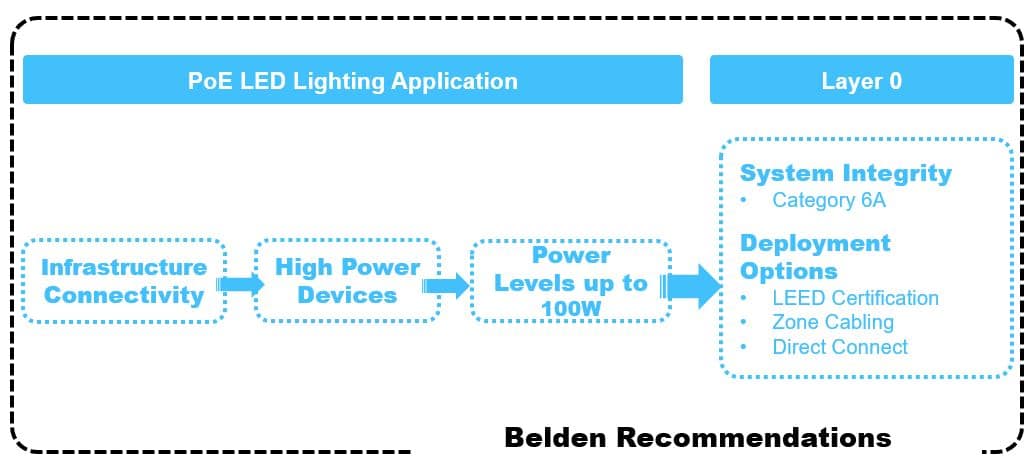Enhance Performance, Productivity and Well-being with Human-Centric PoE LED Lighting
Power over Ethernet (PoE) makes it easier and more cost efficient to power all the “things” that make up Internet of Things and smart buildings. Why? Because, with PoE, powering these devices doesn’t require a power connection and a data connection. Through a single category cable, both power and data can be delivered to a device.
Prior to PoE, these systems may have been able to come together over one IP network for improved control and monitoring, but they still required separate data and electrical connections, as well as proximity to electrical outlets.
Over the past few years, PoE power levels have been increasing – starting at 15W and growing to 30W and 60W. Today, itp’s possible to deliver 100W of power plus data over a single cable. PoE standards are also changing to support higher power levels. IEEE 802.3bt, which is currently under development, calls for 4-pair power delivery to improve efficiency and support complex devices. It also calls for two power variants: Type 3 (60W) and Type 4 (100W).
These higher wattages allow devices like point-of-sale registers, digital signage displays and PTZ surveillance cameras to take advantage of PoE. LED lighting systems can also now connect to the network via a PoE cable.
Connecting LED lighting systems to the network via PoE offers many benefits. Each fixture can utilize a standard RJ45 connector and have its own IP address for individual monitoring and control. Through integrated sensors, LED fixtures transform into smart lighting systems that collect data on occupancy, temperature, daylight, etc. and make changes in lighting levels accordingly.
Who Benefits from PoE LED Lighting?
Although any facility can be a candidate for PoE LED lighting, healthcare facilities are noticing major improvements due to the impact it has on staff productivity and patient care and recovery.
PoE LED lighting offers a human-centric approach to lighting, recognizing that lighting can positively or negatively impact people. Lighting conditions can either disrupt or sync our circadian rhythms, which are physical, mental and behavioral changes that follow a 24-hour cycle. A human-centric approach to lighting means that it can be controlled to enhance performance, productivity and well-being.
In healthcare facilities, for example, fluorescent fixtures can be replaced with PoE LED fixtures that can be dimmed, color tuned and set to specific schedules. This not only improves sleep patterns for patients, decreases falls and reduces disruptive behavior (such as agitation or anger), but also lowers energy costs.

Installation and Deployment Challenges
There are certain challenges to keep in mind when deploying PoE LED lighting. For example, selecting the right option to power your LED lighting through the Ethernet network – either through centralized PoE, distributed/in-ceiling switches or a gateway – is crucial to ensuring that the system functions as expected and offers all promised benefits.
Read full article





